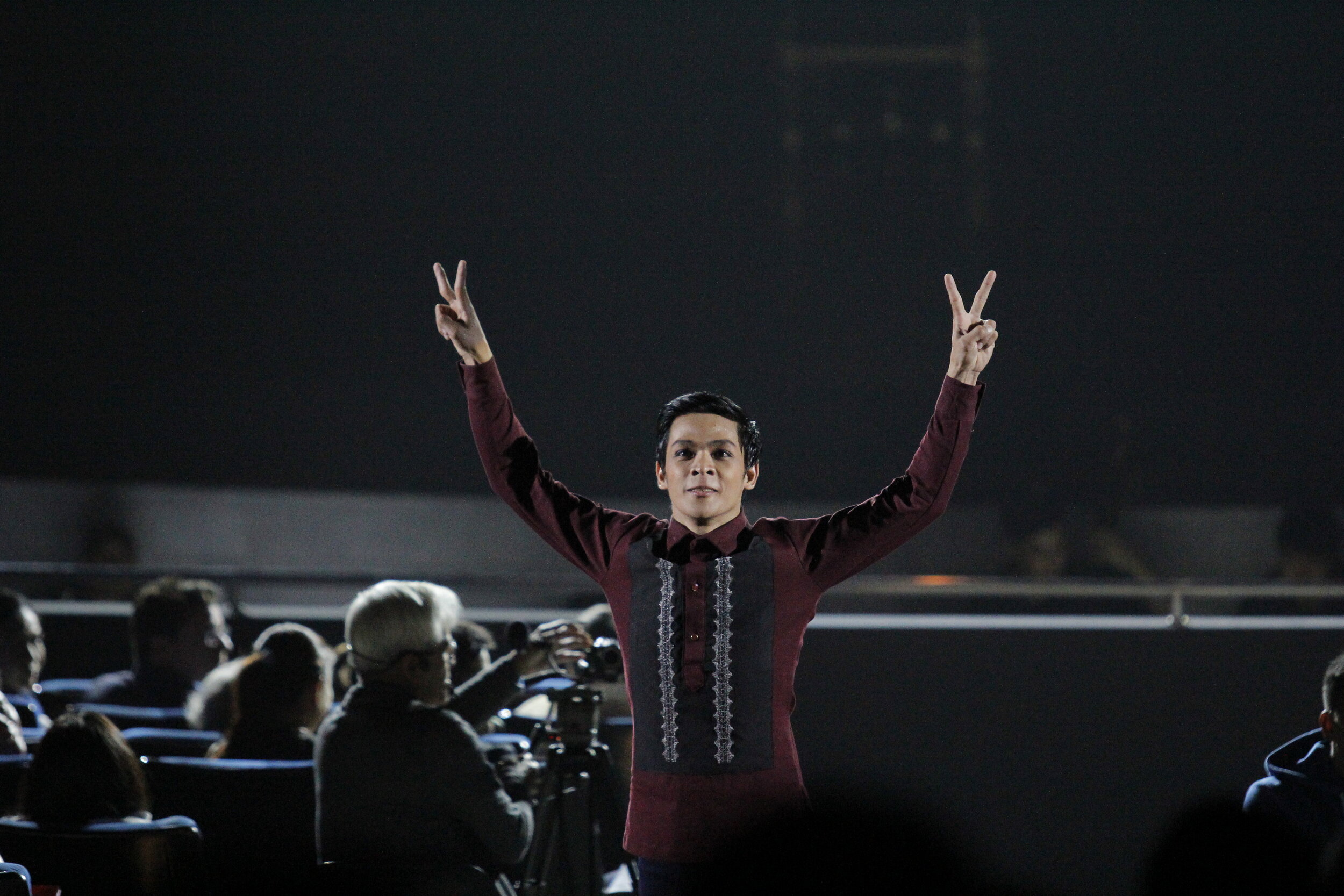Channeling People Power in ballet
The fight for freedom is the thread tying two inspirations that would give rise to Rebel, Ballet Manila’s epic production that had its world premiere in 2016. The full-length ballet by British choreographer Martin Lawrance takes the story of the slave Spartacus who leads the uprising against the Roman republic and casts the real-life personalities involved in the events resulting in the EDSA People Power Revolution of 1986.
In Rebel, Ballet Manila’s dancers re-enact that moment when Filipinos united and linked arms in the aftermath of Ninoy’s assassination. Photo by Ocs Alvarez
Rebel was a passion project of Ballet Manila artistic director Lisa Macuja-Elizalde. She was struck by the similarities between the Spartacus tale that had already spurred ballet productions abroad (the Bolshoi Ballet version of which she had watched and been amazed by) and those historic moments in Philippine history that led to the toppling of a dictator (the EDSA Revolution made global headlines, including in Russia where she still was when it happened).
She nurtured the dream for five years before she found in Lawrance an ideal collaborator who could help retell the fusion of ideas in dance. Thus, the concept of a full-length ballet based on Spartacus but deriving characters and events from the EDSA Revolution came together. In Rebel, Spartacus transforms into Ninoy (Rudy De Dios and Mark Sumaylo), the leader of the opposition movement, and Spartacus’ lover Phrygia into Ninoy’s wife Cory (Katherine Barkman and Dawna Reign Mangahas). The Roman leader Crassus becomes the dictator Ferdinand (Gerardo Francisco and Brian Williamson) while Crassus’ ambitious partner Aegina turns into Imelda (Tiffany Chiang-Janolo and Abigail Oliveiro).
One of the scenes in the symbolic retelling of the EDSA Revolution shows Inang Bayan (sung by Joanna Ampil and danced by Lisa Macuja-Elizalde), Mark Sumaylo as Ninoy, Dawna Reign Mangahas as Corazon and Michael Divinagracia as Juan de la Cruz. Photo by Ocs Alvarez
Lawrance himself would note how the two stories seemed to be parallel to each other. “In Spartacus, you have Crassus the emperor and his concubine and Spartacus the slave and Phrygia, the love of his life. He had to choose between her and doing something to change things. Ninoy was taken away to prison, went to America and then decided to come back to the Philippines. He sacrificed his love of Cory to come back. But, this is more than just a love story.”
Indeed, Rebel, on a bigger scale, was about embodying the spirit of People Power. “We tried our best to capture in movement and music the essence of that historic event in 1986, when the Filipino nation offered a unique gift to the world by showing how a revolution could actually succeed through peaceful means,” said Macuja-Elizalde.
Pas de deux of the characters Ninoy and Corazon as danced by Mark Sumaylo and Dawna Reign Mangahas. Photo by Ocs Alvarez
Gerardo Francisco projects confidence as the dictator Ferdinand. Photo by Ocs Alvarez
The ballerina herself would take on the pivotal role of Inang Bayan, mirrored by a singing Inang Bayan in Joanna Ampil. Michael Divinagracia and Rudolph Capongcol shared the role of Juan de la Cruz, the Filipino Everyman. A corps of some forty dancers would take on roles representing the opposing forces supporting Ninoy and Cory, on one hand, and Ferdinand and Imelda in the other.
“My dream for Ballet Manila to mount a full contemporary version of this classic hero’s journey has found fruition in the most perfect timing and occasion possible – celebrating the 30th anniversary of People Power,” the ballerina enthused in 2016. “We want to remind the audience of that proud moment in time when faith, nonviolence and unity swayed the course of our nation’s destiny. We hope that in some way, the memory will help revive our idealism to commit ourselves to be the change we all want to see.”
Ambitious Imelda, with her supporters dancing by her, is portrayed by Abigail Oliveiro. Photo by Ocs Alvarez







